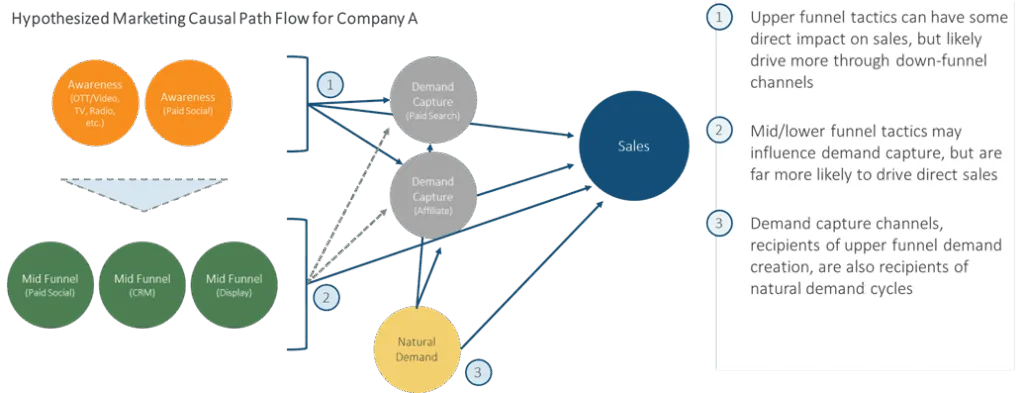There’s no shortage of buzz around AI, but what separates the leaders from the pack is not experimentation for experimentation’s sake. Rather, organizations that are successful in unlocking AI’s value for B2B sales are hyper-focused on where intelligence can move the needle and deliver results.
At the center of the issue is a recognition that, in theory, AI has potential to reshape every aspect of the go-to-market (GTM) organization ― from prospecting and pipeline management to customer support and pricing. In practice, however, leaders confront pressing realities: budgets for technology and transformation are finite, and teams already face limits on how much change they can absorb.
Instead of spreading resources thinly across the latest AI trends, success demands a disciplined focus on the highest impact opportunities, and constant attention to downstream organizational implications to turn AI investments into measurable results.
From possibility to impact: The critical importance of focus
For sales leaders, translating AI’s wide-ranging potential into practical tangible outcomes starts with identifying the right problem to solve. The key is not in asking, “where could we apply AI?” but rather, “where should we apply it first?”
The answer lies in framing AI opportunities through a clear set of guiding questions that connect business priorities, process pain points, and organizational readiness such as:
- What are the strategic GTM priorities over the next year (new logo, cross-sell, churn reduction, etc.)?
- Where in the sales process do reps or managers lose the most time?
- Which parts of our sales model create the most drag on performance today?
- Where would enhanced insight or foresight most change seller and buyer behavior?
- Do we have the data and organizational readiness to act here?
High-performing teams use these questions to cut through the noise and target a handful of use cases where AI can truly change the game. Instead of scattering bets across pilots, they invest in focused applications that drive measurable business value.
Consider five proven examples:
- Dynamic lead scoring: Equipping teams to identify and act on accounts most likely to convert, streamlining prospecting for greater efficiency and increasing qualified pipeline coverage.
- On-demand sales intelligence: Providing real-time access to relevant product, technical, industry, and client information, enabling sellers to navigate even the most complex conversations without pulling in additional specialist resources.
- AI-enabled sales coaching: Leveraging analytics platforms and conversational intelligence to provide real-time, personalized coaching to reps—guiding call strategies, recommending best practices, and helping sales managers tailor development to each team member’s strengths and opportunities.
- AI agents for inside sales: Deploying conversational AI avatars to qualify leads, book appointments, and handle routine inquiries before seamlessly passing high-potential prospects to human reps.
- Pricing optimization: Adapting pricing in real time based on client behavior and market conditions, helping teams close deals faster and at better margins.
New capabilities, new operating models
Done correctly, successful AI deployment should not simply tweak workflows; rather, it should help to inform the future shape of the sales organization itself. As automation handles more data analysis and tactical decisions, the burden of manual, repetitive tasks shrink. Account executives shift toward relationship-building and strategic thinking. Operations and enablement teams shift from report builders and content archivers to stewards of data quality and insight. In aggregate, these shifts enable GTM organizations to deploy fully empowered teams designed for agility and impact.
For example:
- AI-enabled account executives: At a global SaaS company, account executives use AI assistants embedded in their CRM. Rather than depending on a separate team of product specialists, they instantly access up-to-date case studies, technical specs, and dynamic pricing proposals ― strengthening credibility and accelerating sales cycles.
- Operations as a strategic center of excellence: An industrial manufacturer consolidates its sales operations and analytics into a single “insights” team. This group goes well beyond reporting; they continually curate and upgrade the data that AI models rely on, so field reps always act on the clearest possible view of client needs.
- AI agents for inside sales: A technology firm deploys conversational AI avatars to manage the initial stages of prospecting ― qualifying leads, booking appointments, and handling routine inquiries before seamlessly passing high-potential prospects to a human touch. This reallocation of effort allows business development reps to focus on high-value client engagement and strategic nurturing, while machines efficiently scale outreach and qualification.
These shifts let people do what machines can’t: listen, collaborate, and build trust ― faster and with more precision than ever before.
Common pitfalls
Even well-intentioned AI programs stumble when the basics aren’t in place. Two pitfalls in particular tend to limit momentum before value is ever realized.
- Underestimating the data lift
AI doesn’t run on hope ― it runs on clean, connected data. Too many sales teams launch pilots only to discover their CRM is riddled with duplicates, gaps, and outdated records. Without sustained investment in data quality, governance, and integration, even the most advanced AI deployments stall.
Key imperatives:- Treat data stewardship as a core enablement function, not an afterthought.
- Establish clear ownership for data quality across sales, marketing, and operations.
- Start with one or two critical data domains (e.g., accounts, opportunities) before scaling.
- Treating technology as the strategy
AI can sharpen decisions and automate repetitive tasks, but it cannot replace judgment, creativity, or trust-building. Leaders who treat AI as a silver bullet risk weakening customer relationships and demotivating teams. Technology should enable—not dictate—the sales strategy.
Key imperatives:- Position AI as a strategic enabler providing guidance and augmentation, not replacement.
- Reinforce the uniquely human strengths GTM teams bring: teamwork, empathy, negotiation, creativity.
- Set adoption expectations early and broadcast success stories throughout the change management cycle.
Principles for sales organizations in 2025
- Prioritize ruthlessly: Anchor every initiative in business value, rather than novelty or hype.
- Redesign deliberately: Let structure follow strategy, adapting roles to maximize new capabilities.
- Invest in data: Treat data quality and integration as non-negotiables.
- Retain a human core: Encourage teams to use AI as a catalyst for insight and creativity, not a substitute for them.
The future of B2B sales will be shaped by leaders prepared to invest with discipline, reimagine their structures, and blend technological horsepower with human-led strategy and ingenuity.
If you want help evaluating if your organization is ready for AI or which use cases to implement first, get in touch.











